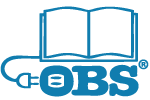Last week we attended the MLA annual convention in Boston and ran into some industry friends from the “old” days of e-publishing, primarily from the university press community. Most reported a steady erosion of paper sales at their various institutions, particularly among the niche of scholarly monographs, which used to be a steady mainstay and reliable source of income. Monograph print runs that used to be perhaps 1-2,000 copies have shrunk to several hundred copies, as the library budgets dry up and purchases rapidly decline. This causes problems among academics, who need to publish their work in order to secure tenure track positions and avoid adjunct status.
At the same time, “e” sales are increasing. But because such e-sales are usually made through new e-publishing players (middlemen and aggregators who generally take hefty percentages of sales income), rather than as direct sales, “e” income hardly replaces “p” income. As a result, a dual budget/identity crisis looms large for university presses. Several presses we spoke to suggested they might ask their sponsoring academic institutions to change their press’s status from a revenue-neutral center to a cost center for services offered to the academic community, thereby adopting an open access rather than user-paid business model for their content. This would mean scaling back or even eliminating book production per se, while maintaining their core value-adds of selection, acquisition, and peer review. In such a scenario, if the university presses posted their “raw” unedited e-content online at their web site, available for free, they would leave the actual publication and sale of content up to the authors themselves in a world where self publishing increasingly becomes the norm.
To put such a move in perspective, we harken back to what to some of us are the “old days” of publishing: the 1970s, when university presses set the highest bar for book production standards, employing the most dedicated and experienced editors, scrupulous copy editors, fact checkers, and insisted on the highest type and design standards. One university press we worked for back then refused to pay proofreaders who missed more than one typo per hundred pages of text. A reader could trust as true the content of a book bearing a quality university press logo. Once those production skill sets and work habits are lost, our publishing industry stands to lose a central part of its own identity.
